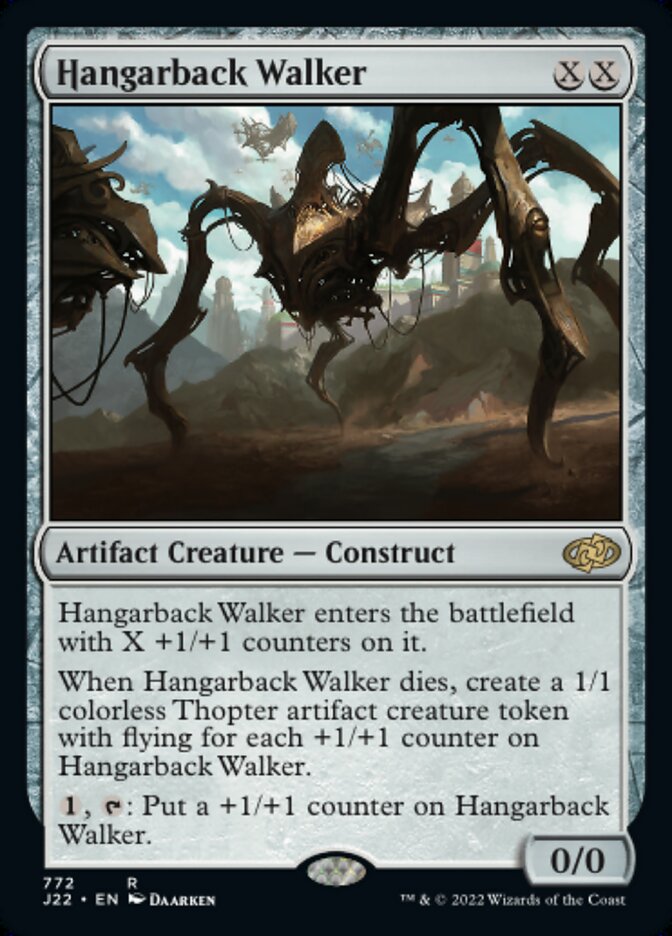Are you a Quiet Speculation member?
If not, now is a perfect time to join up! Our powerful tools, breaking-news analysis, and exclusive Discord channel will make sure you stay up to date and ahead of the curve.
I think that it's fair to say that I have well-above average knowledge of a given Magic card's price. My level of knowledge in this regard has always been pretty high, though I'll admit that it's gone up significantly since I've started vending. Buying and seller a high volume of cards will have that effect on you.
Initially I had mixed feelings about buying cards at the booth. On the one end, I really enjoy the concept of haggling, but my reservations come from the fact that I try to be an agreeable person. Buyers don't always have a very positive reputation, even when they're honest people. Thus far I've only had one person be expressly unhappy with an offer I made on his card, but to be fair he wasn't aware that Windswept Heath was just announced in the Clash Pack, which was the reason that I thought he was selling the card in the first place.
Anyway, as most vendors and financiers will tell you, in order to acquire a high volume of sought-after cards you'll want to maintain a buylist with attractive prices. That said, you'll also just want to have the capacity to buy any Magic card that people want to part with. Buylists get you Hangarback Walkers, and buy mats get you Scourge of the Thrones and Nicol Bolas, Planeswalkers.
When I first started buying I had too look up a lot of cards. Some of the Commander releases and things like Conspiracy simply featured cards that I had never heard of, and there were also a lot of higher-end cards that I wanted to make sure I was offering a price that was good for both parties on. I still look up a good amount of $10+ cards in part due to the unstable nature of card prices, but experience has given me a feel for what I can and should offer on the majority of rares.
Most of what you're going to buy will be bulk. Junk rares with little to no demand and/or cards rotating out of Standard are good for dimes. That said, you can't just set up with a "We Buy Everything" banner and offer dimes for every card in somebody's binder. While you don't need to have a formal buylist for lower-end cards unless you have specific inventory or personal needs, you'll want to buy some lower-end cards for a quarter or fifty cents to minimally demonstrate to your customer that you care about what you're doing and aren't a dime-trading robot.
I've looked at a lot of Theros rares lately, and most of them are worthless, but there's a short list of cards that I'll pay above bulk on. I was paying quarters on Dictate of Erebos a couple months ago when it was seventy cents for the reasons I've mentioned, in addition to the fact that the card was very likely to have a positive price trajectory.
Buy prices start to vary a lot more when cards are worth more than $2-5. Of course, price isn't the only thing you have to take into account with a Magic card, as I'm sure you're all aware. These are the loose rules that I use for varying buy prices:
Standard Rares
The two most important factors for your buy price for Standard rares are the expected price trajectory and your inventory.
Let's say it's Magic Origins release weekend, and you don't believe in the longevity of Evolutionary Leap. The card was around $5-6 upon release. You want to give a fair price, but you don't want everybody to dump their Leaps on you. For release weekend, you can expect somebody will be looking for any of the potentially playable rares, with TCGPlayer being a backdoor out. Live demand is going to be more profitable than online sales due to the fees involved, so you want to be careful not to overpay.
If somebody asked me specifically about Leaps, I'd offer very close to retail just for a guaranteed sale. Paying $4 for a quick-flip for $6 is clearly excellent! You've given one customer a great price on their card and you were able to provide a new product to a different customer, and you even pocketed a buck or two in the process.
Even if you're not guaranteed a sale, you'll want to have a set in stock immediately just in case. $3 is on the high side of what I would have paid for a card like this, and I'd likely start by offering $2 and moving down to $1 after I acquired a set, and even lower as I bought more. Clearly you need to lower your buy price if you buy faster than you can sell.
Chase rares, on the other hand, you'll want to pay 50% or more on depending on your stock. At the time of this writing, Hangarback Walkers are about $20 shipped on TCGplayer, and it's a card that I'm quite bullish on. I'd happily pay $12 on Walkers, and I'd even chase up a couple dollars if a seller denied this offer while I was looking at their binder.
I'd stop chasing beyond $12 after I had two sets (we're a pretty small operation), but I definitely want to go out of my way to have chase cards in stock--especially Standard ones.
Chase Modern and Legacy Cards
Modern is a little tougher. When we started vending, Modern had already experienced multiple price booms. So it's rather unavoidable that we won't be able to service everything Modern, and we certainly won't have everything in Legacy.
For this reason, I won't generally go over 50% on more fringe Modern cards, but I'll generally buy higher-end things for between 60-80% of their value. Having Tarmogoyf in your case is ideal--somebody will buy them--and you need your buy price competitive with the market.
While Modern prices are pretty volatile, you generally only have to be concerned with overpaying for cards that just spiked due to what looks like a buyout, or if you're concerned they'll be banned. Reprints are a problem too, but for the most part it's just good to have Modern and Legacy staples in your inventory, so you won't have to sell many of these online. As such, it's good practice to be generally more aggressive with these cards.
Non-Standard Casual Cards
Unless you know your playerbase will buy a lot of casual stuff from you, this is the category that you have to be the most careful with. Almost all of our casual stuff ends up going right to TCGPlayer, which means we're selling it for TCG low and paying fees. Additionally, sometimes you post at low, get undercut, and have to lower your price more before you sell it.
Sometimes casual listings are just price-memory, and the price real people will pay is a dollar or more below the lowest priced copy on TCGPlayer. I know from experience that I can sell any Bloodghast, Darksteel Colossus, and Toxin Sliver that I can get my hands on for a specific price, but I've already lowered the price on the foil Teferi's Puzzle Box I picked up at a few dollars since acquiring it and I don't know if it will ever sell.
For this type of card, even the ones that I know will sell, 50% of TCG low is the high end of what I'm looking to offer. Online sales involve a lot more work, and the fees impact your profits. If I'm selling online, I'd prefer to pay $2 for a card that I'd list for $6-7, and I wouldn't bother listing cards that TCG for less than that.
As such my buy price would drop to at most $1 for a casual card in the $5-or-fewer dollar range. You just can't spend too much on the cards that sell slowly and take work to move. Clearly these prices and percentages scale up with the price of a card, but with these casual cards I find my best move is sometimes just to buylist them myself, which means I simply can't buy them aggressively.
Bulk
Lastly, you'll want to have a bulk rate if people just have a lot of stuff. Dimes for rares if a seller just wants a bulk rate is common, and something like a quarter for an inch of bulk common/uncommons is reasonable.
You'll get a lot of sellers with a lot of stuff to move that they value at nothing, and having a flat bulk rate will benefit you. There will often be something of value in the mix, but it won't be worth your time to go card by card on bulk. I always tell people to pull anything that they think is worth more from their bulk before they sell it, which is a courtesy that not all buyers provide.
You end up with a lot of junk buying bulk and collections, but at the end of the day there are plenty of other vendors and stores that will buy your bulk.
~
Not everybody is naturally wired to be good at buying for a store, and even the people naturally predisposed to it will find themselves learning more from practice than from research, but I hope that this guide is helpful to aspiring buyers.
Thanks for reading.
-Ryan Overturf
@RyanOverdrive on Twitter










You did a great job of putting into words hard topics to convey. I know and do all of these things but putting it into a format new buyers can understand is more difficult than it seems. Well done.
I trade for bulk a lot. When I do it in person I will go through the cards to make sure the condition is ok and if I notice something that isn’t bulk I’ll tell them. If it’s through mail I don’t bother letting them know about above bulk stuff, but, I won’t be picky on condition if there is some above bulk stuff to compensate. If people think I offer a low price for bulk I’m always happy to indicate that they should take out whatever they’re not happy to trade at bulk prices. I’ve had a few cases where I indicated that a card was above bulk and the other guy said he didn’t mind.
While I know a lot of prices I would not feel comfortable making offers on a card by card basis. I’m happy to make offers on collections as I figure anything I might over- and undervalue is going to balance each other out and my offer will be skewed in my favor if I have any doubt. Card by card though means the seller can just only accept the prices when I am too high. That’s too daunting for my taste.
I myself buy a lot of bulk rares, and common and uncommons and I tell the constumers that pull anything that you think is worth money before you sell it to me. You be suprised how many 10 cents Endless ranks end up in my hands. Or recently that ghost fire blade that no one wanted at all turn from 10 cents to 1.25…. BULK FTW!